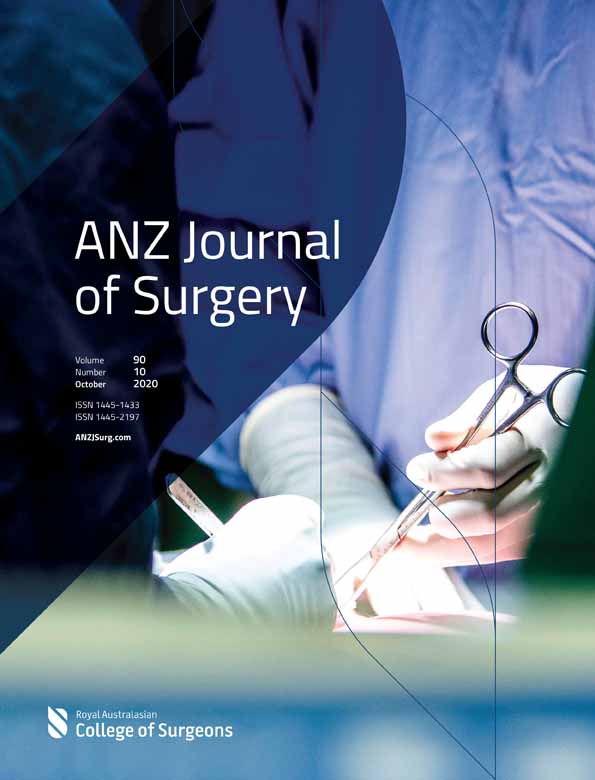Global Health in the ANZ Journal of Surgery
We are proud to launch the Global Health section of the journal.
The Royal Australasian College of Surgeons and the ANZ Journal of Surgery strongly support local research and authorship, and the contributions in this issue feature authors from the countries that we partner with in the Pacific, Papua New Guinea (PNG), Timor Leste and Myanmar.
In 2020, it is clear that surgeons need to be advocated for global health, as we face the twin emergencies of coronavirus disease 2019 (COVID-19) and climate change. Our perception of risk associated with these threats determines the rate and amplitude of our response. The Lancet Commission on Planetary Health identified three categories of underperformance related to our changing environment that will also be applicable to our response to the pandemic – failures of imagination, including the inability to conceive of a measure of human progress other than GDP; knowledge and information failures concerning the social determinants of health; and governance and implementation failures, by which we delay and fail to respond, especially when faced with uncertainty.1
Dr Tedros Ghebreyesus, WHO Director General, said COVID-19 ‘has exploited inequalities in our health systems and the schisms in our societies. It has exposed existing inequities, widening and deepening the cracks between us’.2 Only through collaborative action, within our own communities, our region and our planet, can we contend with these extraordinarily complex challenges.
Never has there been a more critical time for the World Health Organization (WHO). Since its inception in 1948, the WHO has provided guidance for member states of the United Nations (now 194), sharing information and standards. In 1980, WHO Director General Dr H. Mahler first made the case for equitable access to surgical services.3 Four decades have passed, and during this time we have witnessed the epidemiological transition from communicable to non-communicable disease. We now recognize that five billion people do not have access to safe and affordable surgery and anaesthesia.4 The WHO recognized the need to improve the delivery of surgical care in adopting resolution 68.15 at the World Health Assembly in 20155 and subsequently requiring an update at its assembly every 2 years until 2030.6 The perspective by former WHO surgical lead, Dr Walter Johnson, outlines the progress on strengthening emergency and essential surgery as a component of universal health coverage over the last 5 years.7
The Royal Australasian College of Surgeons has been actively engaged with this advocacy work, based on a long history of specialist service delivery, capacity building and collaboration in the Pacific, PPNG and Timor Leste. The history of our relationships in the region, and our contributions to health system strengthening are curated in Watters et al.'s perspective.8
‘What is not measured may not be planned for or managed’.9 Responding to the Lancet Commission's recommendations on surgical metrics, the Pacific launched a collaborative effort to report these for our region, highlighting access to surgical care and limited workforce as critical issues.10 In this issue, James et al. report on the Lancet indicators for Milne Bay Province in PNG, an archipelago with a population of 330 000 people. This paper confirms significant barriers to access, and profound deficiencies in surgical workforce. It also provides valuable data on the financial risk associated with surgical care.11
Comery et al. examine surgical capacity in Samoa using the WHO Emergency and Essential Surgical Care checklist, and their interviews with a range of health system stakeholders identified a range of barriers to care, and opportunities for change.12
The fourth Lancet metric, post-operative mortality rate, is an indicator of safety, and post-operative mortality rates in the region are low. Nagra et al. modelled the changes in the proportion of mortality related to perioperative care that might be expected from scaling up of surgical volume in the region towards the Lancet Commission's target level of 5000 procedures per 100 000 population.13
A profound lack of epidemiological data for the region compounds the difficulties that exist for surgical planning, as nations deal with the double burden of communicable and non-communicable disease. Fordyce et al. have documented the burden of breast disease presenting to the National Hospital in Dili, Timor Leste, reporting an alarming rate of malignancy in young women, and the need for a national registry to inform policy makers.14
As the focus for development assistance shifts from service delivery to capacity building, educational activities are an increasing component of programmes in the region. Nataraja et al. detail the results of 4 years of simulation education at Yangon Children's Hospital, Myanmar, utilizing affordable and reproducible models that could be adapted to almost any setting. Train the trainer principles enabled successful handover to a local faculty within this time frame.15
As the COVID-19 pandemic continues to wreak havoc with health systems and economies around the globe, commentators are stating that we are at an inflexion point of a magnitude not seen since World War II. With health at the forefront of our political agendas, and a massive allocation of resources to health systems, a window of opportunity exists for surgical system strengthening. The immediate response is primarily on building capacity to cope with the case load of COVID-19. However, health system reform, innovative models of care, improvements to infrastructure and health information systems, and rapid upscaling of workforce, supply chains and research capacity have the potential to benefit all aspects of universal health coverage, including surgical and anaesthesia care. It behoves all of us to ensure that the benefits of this investment in health are fairly distributed to all.




